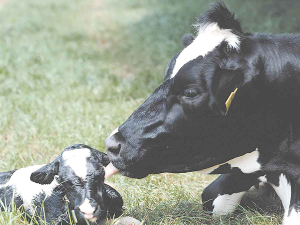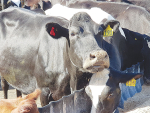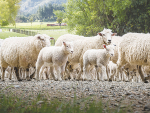Autumn calves are born in kinder conditions than what their spring cousins enjoy. But it takes a careful nutrition regime and a close eye on growth targets to capitalise on the opportunity nature, through pasture, offers this time of year.
A keen focus on autumn calves’ bodyweight targets will also reap future production and financial benefits.
However, for those farms closely monitoring autumn calf liveweights, they need to ensure they are focused on the right numbers.
SealesWinslow nutrition extension specialist Simon Butler says national industry liveweight targets for young stock are not optimal. In fact, he believes these are closer to what should be considered minimum weight goals.
“Young stock liveweight correlates directly with milk yield in a cow’s first lactation. Heifer calves grown well have the potential to deliver an additional 65kg milksolids each, or around $650 per head a year as lactating cows.
“With the average herd having 100 head of replacements, that’s $65,000 a year. This is a lot of money to leave on the table by not investing in autumn calves’ nutrition at this early stage of their lives.”
Regardless of when a calf is born, it needs to hit or exceed key bodyweight targets on time. And, depending on breed, calves must average 600g to 800g of daily bodyweight gains for the first two years of life.
“A heifer at calving should reach 90% of her mature body weight,” says Butler.
“Liveweight, not age, determines maturity. Reaching a mature liveweight faster means she will reach puberty earlier, will get in calf earlier, and be in the herd milking sooner.
“A heifer achieving her liveweight earlier will also partition more of her energy output into milk production, rather than into liveweight gain.”
Taking no shortcuts on meal quality becomes even more critical for autumn calves heading into winter.
“Autumn calves are entering a colder period when their growth rates must peak at a time when they are also adapting to an all pasture/forage diet. So early rumen development is critical. To take advantage of the feed available and avoid a weaning check, rapid and complete rumen development must occur.
“But the challenge is that calves are pre-ruminants. This means they lack the capacity to effectively convert fibrous forages into energy. For this reason, a quality hard feed is essential for achieving optimal rumen development.”
Feed Quality Crucial
Supplementing pasture with a high-quality hard feed is even more important for autumn calves, as they are likely getting a higher proportion of pasture in their diet earlier than their spring counterparts.
“A nutrient dense, low fiber, 20% calf meal with a high starch content and a quality suite of additives can develop the frame of the calf while also driving rapid rumen development. The result is better pasture intakes and less aggressive growth checks,” explains Simon Butler.
Quick and complete rumen development requires a hard feed containing a high starch component.
“Protein and energy are essential in developing the calf’s musculature and frame, and high levels are required to achieve good weight gains. But if starch content is low then the rumen won’t develop as well.”
That’s because rumen microbes break down carbohydrates to produce volatile fatty acids, the source of three quarters of a developed cow’s energy needs.
“Introducing a premium hard feed in these critical early days, and monitoring growth rates closely, will help ensure calves have what they need to get the best out of pasture and continue to grow during the challenging winter period,” Butler says.
“The end result is protecting yourself against leaving valuable milksolids income behind once they enter the milking herd.”


















